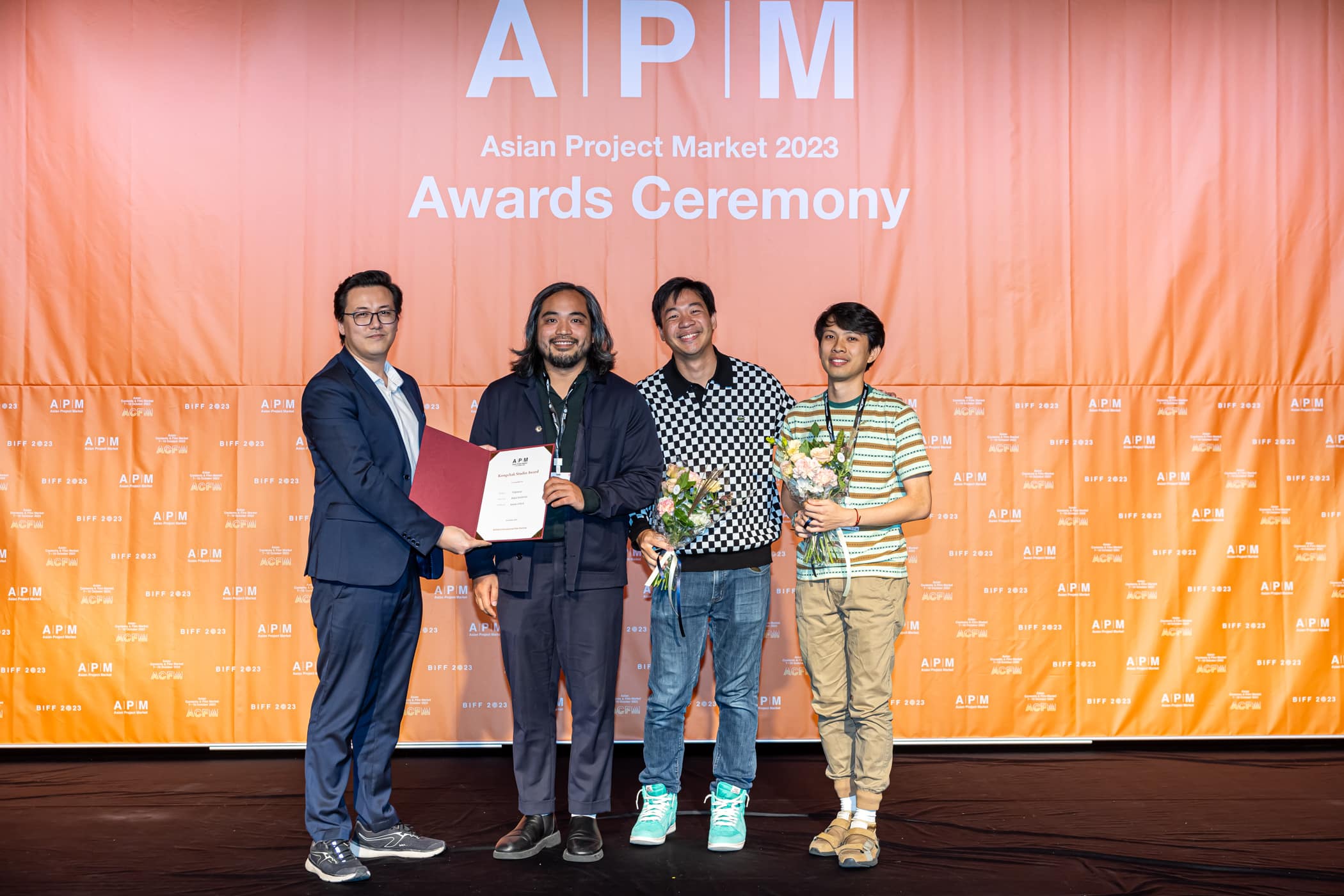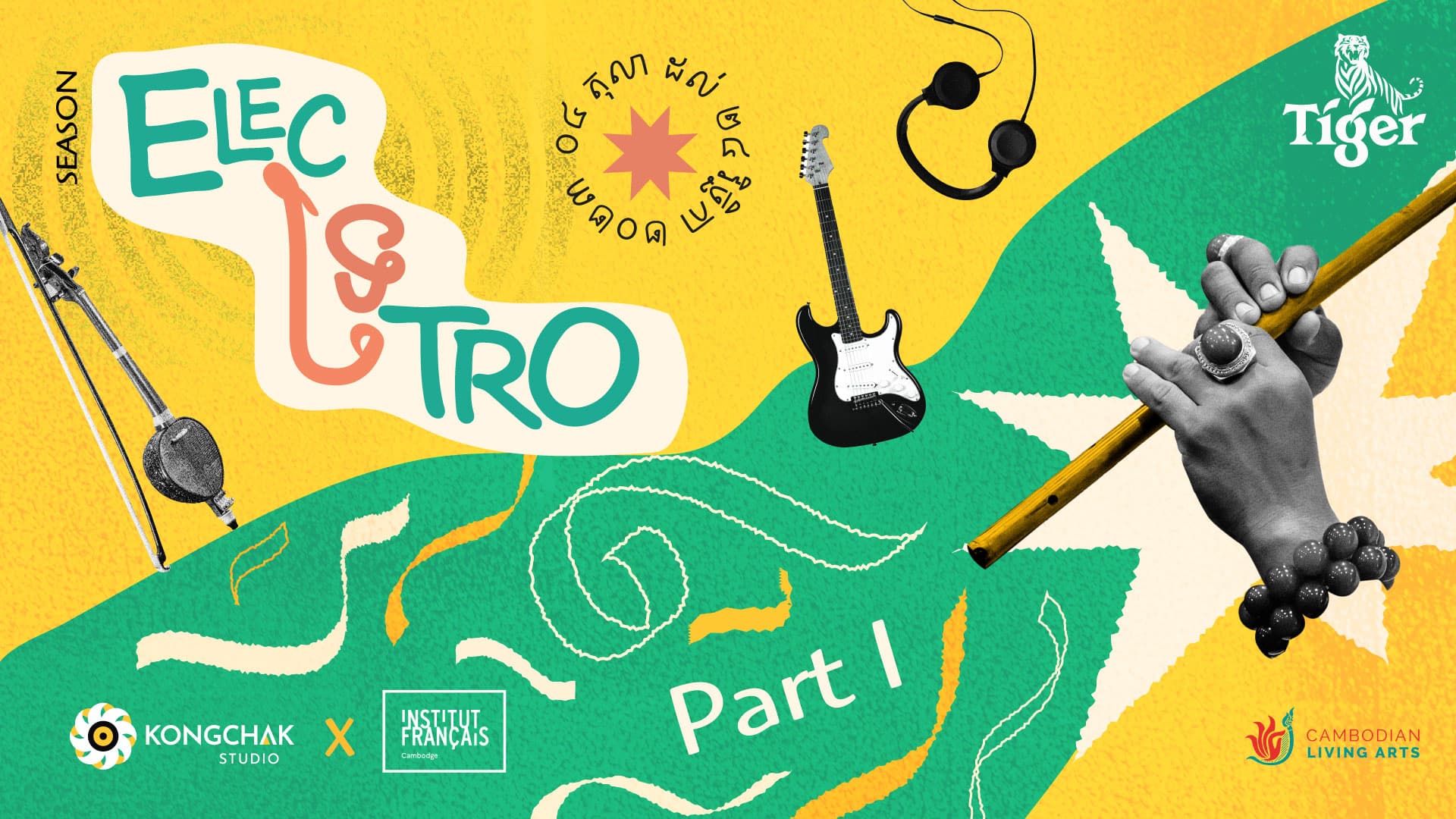- KONGCHAK PICTURES
From Angkor Wat to Ap’s Haunts: A Khmer Horror Film Odyssey
Posted on August 4, 2023
In the heart of Cambodia lies a realm where ancient temples and mystical creatures converge, creating an enchanting backdrop for a genre that has captured the nation’s imagination for decades – horror films. Step into the world of Cambodian cinema, where the iconic Angkor Wat, enigmatic Nagas, and terrifying Aps come to life on the silver screen, weaving tales of mystery, supernatural encounters, and spine-chilling creatures.
It all began in the 1930s, a time when Angkor Wat was experiencing increased interest from the international world. This led to the creation of one of first-ever horror films to be set in Cambodia, “Revolt of the Zombie” (1936). Directed by Victor Halperin, this zombie movie takes place in the backdrop of Phnom Penh and Angkor Wat in Siem Reap, Cambodia. The film unfolds a story revolving around an “Asian priest” with the sinister ability to transform people into zombies. Set against a post-World War I expedition to Cambodia, the movie is a blend of mystery and the supernatural, showcasing the breathtaking Angkor Wat. Although the film producer only sent a crew to shoot Angkor Wat as a background, this marked the beginning of Cambodia’s enduring fascination with the horror genre.
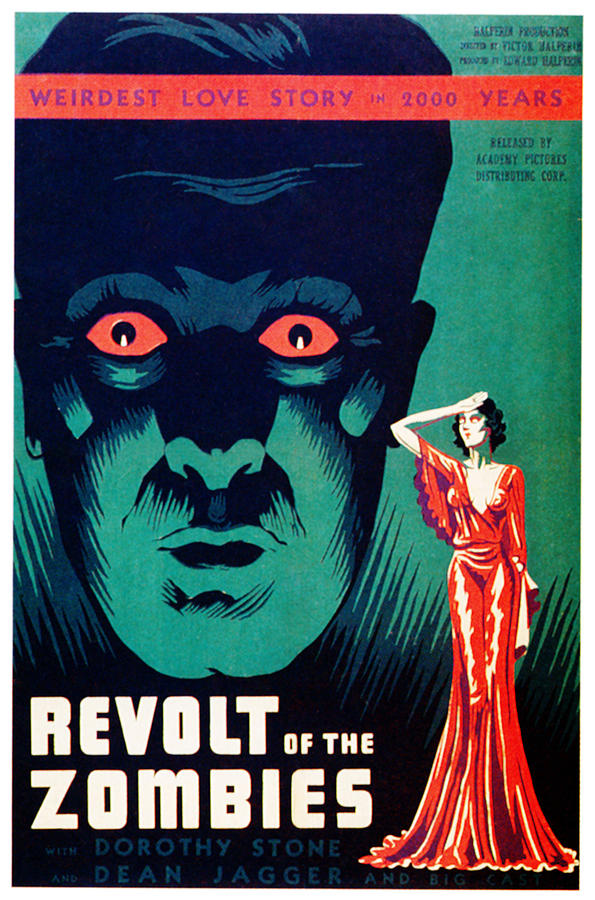
As Cambodia’s film industry thrived during its Golden Age in the 1950s and 60s, King Sihanouk‘s remarkable producing skills fueled a creative explosion. However, it was in the early 70s that horror films began to captivate the hearts of Cambodian audiences.
Folklore and the Supernatural in Horror
Deeply rooted in Khmer folklore, horror films embraced the allure of Nagas, snakes, and Aps. One of the earliest successful Cambodian horror films, “Pous Keng Kang or The Snake King’s Wife,” directed by Tea Lim Koun in 1970, boasts a star-studded cast, including Dy saveth, Chea Yuthorn, and Sak Sisbong. The film weaves a spellbinding tale of a young woman’s love for a part-snake, part-human creature, and the formidable challenges she faces from a jealous stepmother. Even today, it remains a beloved household favorite across the nation.
In LinDa Saphan’s book, Faded Reels: The Art of Four Cambodian Filmmakers, the author explored Tea Lim Koun’s adaptation of the Naga and the Ap from Khmer folklore onto the silver screen.
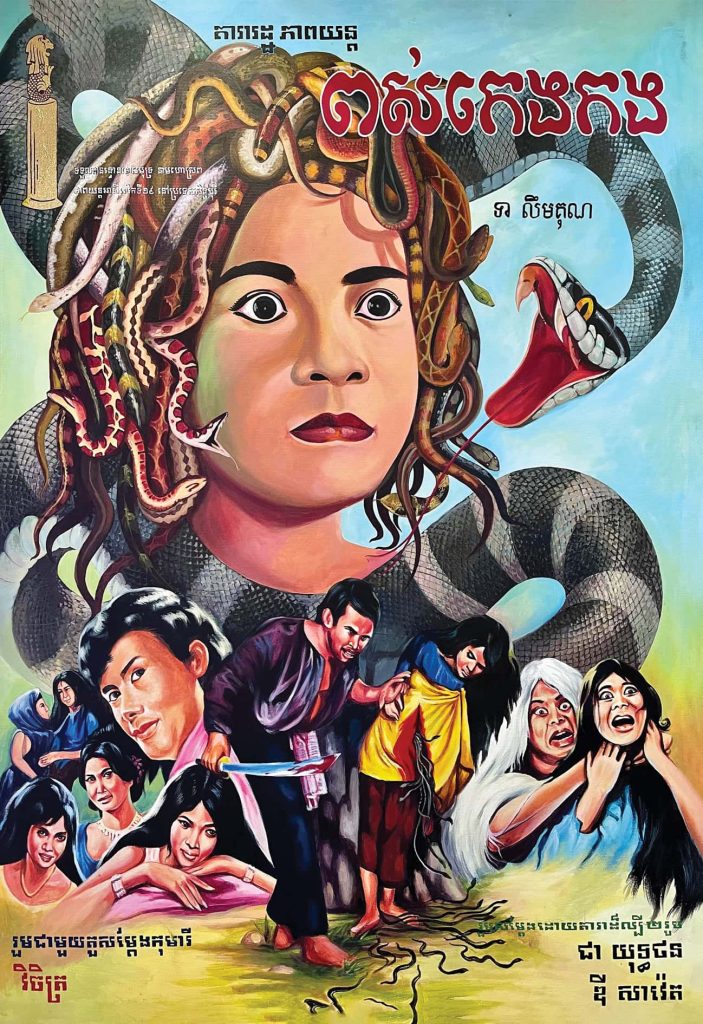
The Naga, an iconic figure in Hinduism, Buddhism, and Jainism, possesses shape-shifting abilities and is perceived as both a potential danger and a protector of humankind. In contrast, the Ap, a prominent monster in Khmer horror cinema, appears as a woman’s glowing head connected to exposed, floating entrails, drawing inspiration from Khmer folktales of female transgression and witchcraft.
The success of “Pous Keng Kang” paved the way for a series of horror films, including the highly anticipated sequel in 1973 and other film like “Crocodile Man,” “The Snake King’s Wife Part 2,” “The Snake Girl,” and “My Mother the Ap.” Despite the harrowing Khmer Rouge conflict, approximately 33 cinemas in Phnom Penh continued to operate, providing audiences an escape from the grim realities of war.
Horrors of War Changes Film
Delving into the psychological aspect of horror films, Saphan explores the realm of the subconscious in her book. Reflecting on Freud’s theory of the “uncanny,” Saphan suggests that horror films tap into collective subconscious fears, desires, and archetypes. In this context, “Pous Keng Kang” may have intentionally connected with the audience’s deepest fears, offering an outlet to emotionally cope with dark subject matter by juxtaposing it among mythical creatures, thus separating reality from the cinematic experience.
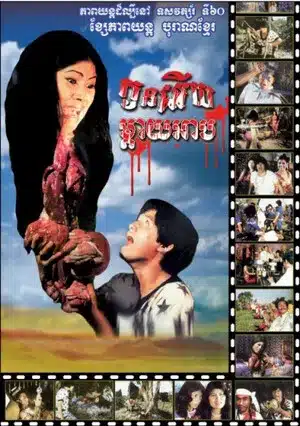
In the wake of the Khmer Rouge’s devastating regime, Cambodian cinema witnessed a pivotal turning point in 1980 with the release of “Koun Aey Madai Ap (My Mother the Ap)” by Chan Dara Thy. This hauntingly grim horror film re-introduced the Ap, a vampiric creature, as a symbolic representation of the dark era that the nation had endured. Departing from folklore, the Ap was portrayed as an innocent woman subjected to violation and injustice, transforming into a spectral monster to expose the hidden violence inflicted upon her. Thus, the Ap found a new role in twenty-first-century Cambodia, becoming a potent medium to convey otherwise unspeakable past traumas through folklore and the supernatural.
“Koun Aey Madai Ap” struck a deep chord with Cambodian audiences, especially during the early 2000s when the nation boycotted Thai media. Despite critiques and even bans on ghost films at the Khmer Film Festival in 2008, the Ap’s enigmatic presence persisted, continually captivating the attention of viewers. Though older films might have been lost to time, the Ap’s role as a classic movie monster continues to embody the fear of concealed malevolence lurking beneath a human facade.
The prevalence of the Ap in Cambodian cinema has not been without its challenges. In 2006, the Khmer Film Festival faced numerous complaints about an influx of low-budget horror flicks, with nearly half of the entries falling into this category. Consequently, ghost films were eventually banned during the third Khmer Film Festival in 2008. However, despite efforts to curb its influence, the Ap’s allure remains unwavering, continuing to captivate audiences with its unsettling allure.
Cambodia’s Modern Horror
Despite the tumultuous past, Cambodia’s horror film industry has thrived in recent years. Horror stands tall as one of the three most popular genres in Cambodian cinema, alongside period pieces and melodrama/romantic drama. During the mid-2000s, the emerging industry drew inspiration from the global appeal of Japanese horror films, significantly influencing Cambodian horror productions. These films delve into ghost hauntings, possession, folk mythology, and supernatural revenge, offering a unique storytelling experience characterized by suspense, impending doom, and psychological tension.
Amidst challenges and competition, some local production companies rose to the occasion, paving the way for the genre’s resurgence. The 2003 Phnom Penh riots and the ban of Thai soap operas and films in Cambodia provided the perfect opportunity for local producers to captivate audiences, particularly the younger demographic, with their horror offerings.
Between 2004 and 2006, nearly 20 horror films annually emerged from Cambodia’s domestic producers, accounting for almost half of all Khmer films during that time. Companies like FCI Production and Campro Production, founded by Heng Tola, left a mark on the horror landscape. Despite modest budgets, Campro managed to produce entire movies within just three months, at an average cost of US$30,000, showcasing the resilience and resourcefulness of Cambodian filmmakers.
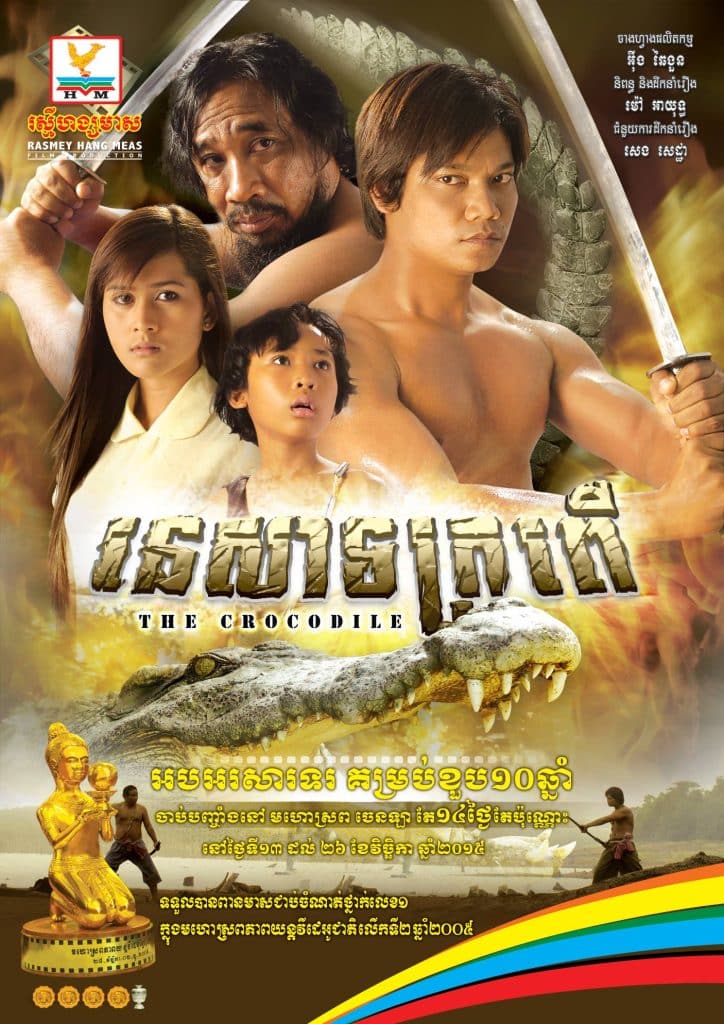
From period ghost films to psychological thrillers, Cambodia’s horror cinema delivered captivating narratives that resonated with audiences. “The Crocodile,” a groundbreaking production with a budget surpassing $100,000, became the nation’s highest-budgeted film and earned multiple accolades and acclaim.
Notably, Cambodia’s monster films, including “The Forest,” “Queen of Cobra,” and “People Eating Lizard,” captured attention with their unique charm, drawing inspiration from Hollywood’s monster genre and often revolving around teenagers and haunting encounters.
The past two decade witnessed Cambodia’s horror film industry embrace new technologies and unexplored territories. From the first on-set zombie film, “Run,” to visionary works like “The Ritual: Black Nun,” the genre continues to captivate global audiences. Excitement surrounds upcoming projects like Kongchak’s “Tenement,” promising to push the boundaries of horror innovation.
Cambodia’s horror films transcend mere tales of terror, reflecting the nation’s rich cultural heritage and fascination with the supernatural. Through these cinematic experiences, audiences confront their deepest fears, delving into the enigmatic allure of Khmer folklore and embracing a journey that echoes through time, captivating viewers at home and beyond.
Article by Sotheavy Nou
